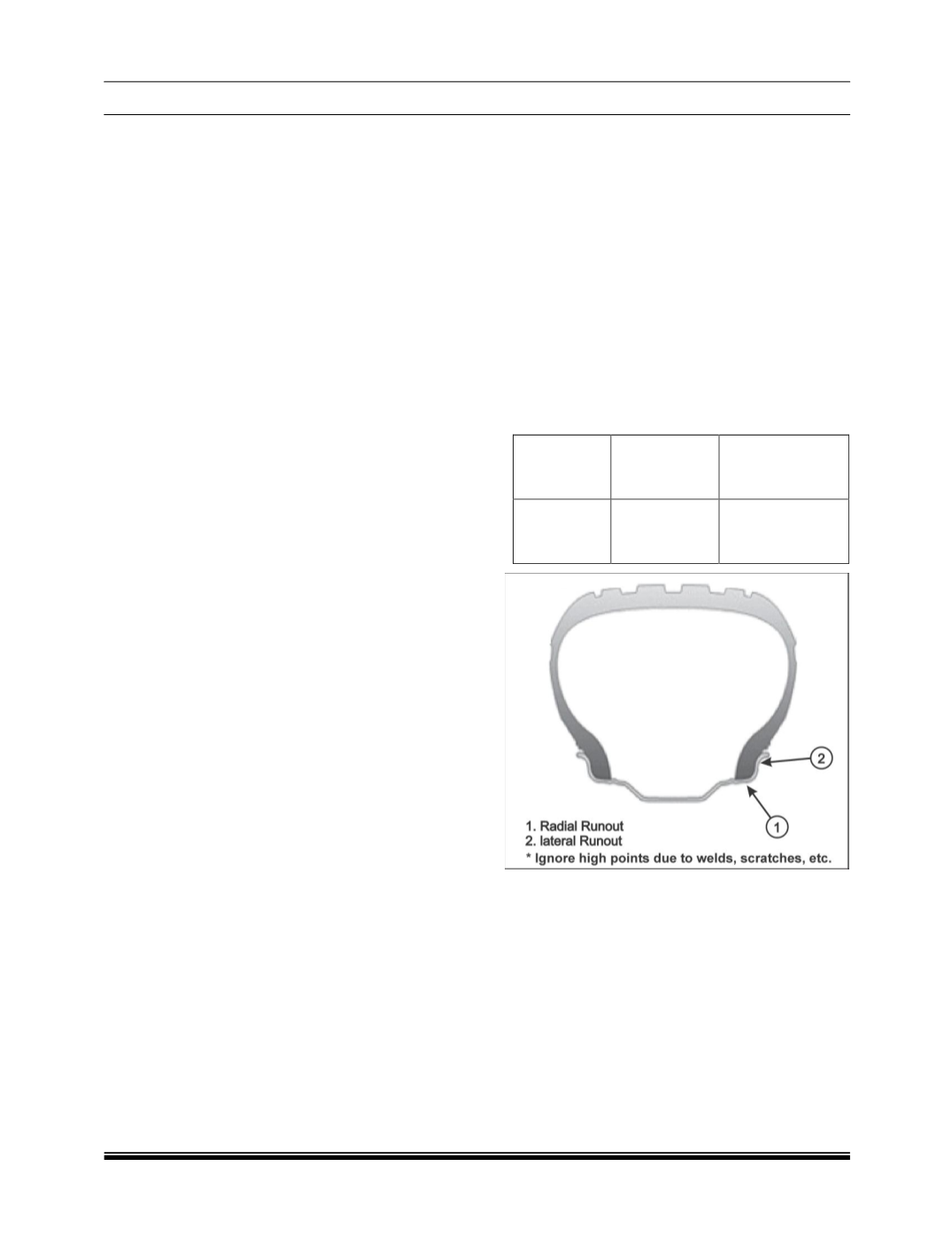

SUSPENSION
46
5.10 WHEELS AND TYRES
Wheels and tyres assembly is an important part in
the vehicle; it has effect on performance of the
vehicle.
It is responsible to transfer the required road feel to
the driver and passengers. Hence it is required to
follow correct workshop practices.
A) TYRE INSPECTION
Inspect the tyre for the following and replace if
found.
a) Bulge on threads and side walls.
b) Cuts, cracks, abnormal, excessive, and Un-
uniform tyre wear.
B) REPLACEMENT OF TYRES:
When replacement is necessary, the original
equipment type tyre should be used. Replacement
tyres should be of the same size, load range,
speed rating, manufacturer and construction as
those originally on the vehicle. Use of any other
size or type tyre may affect ride, handling,
speedometer/ odometer calibration, vehicle ground
clearance and tyre clearance to the body chassis.
It is recommended that new tyres be installed in
pairs on the same axle. If necessary to replace only
one tyre, it should be paired with the tyre having
the most tread, to equalize braking traction. Also
do not mix different types of tyres (viz. radial, bias
etc) on the same vehicle, because it badly affects
the handling of the vehicle.
C) REPLACEMENT OF WHEELS:
Wheels must be replaced if
1. They are bent,
2. Dented,
3. Have excessive lateral or radial run out,
4. Air leak through welds,
5. Have elongated bolt holes,
6. If wheel bolts will not stay tight, or
7. If they are heavily rusted
8. Chip off (for Alloy wheel).
Wheels with greater run out than specification may
cause vibrations.
Replacement wheels must be equivalent to the
original equipment wheels in load capacity,
diameter, and rim with offset and mounting
configuration. A wheel of improper
Size or type may affect wheel and bearing life,
brake cooling, speedometer/odometer calibration,
vehicle ground clearance, and tyre clearance to
body and chassis.
5.10.1 HOW TO MEASURE WHEEL RUNOUT:
To measure wheel run out, it is necessary to use
an accurate dial indicator. The tyre may be on or
off the wheel. The wheel should be installed on a
wheel balancer for proper measurement.
Take measurements of both lateral run out and
radial run out at both inside and outside of the rim
flange. With the dial indicator set in place securely,
turn the wheel on full revolution slowly and record
every reading of the indicator. See fig 86.
When the measured run out exceeds the
specification and correction by the balancer
adjustment is impossible, replace the wheel. If the
reading is affected by welding, paint or scratch, it
should be ignored.
Radial
Run out limit
Lateral
Run out limit
Steel wheel
/alloy wheel
1.0 mm
(0.039 in)
1.2 mm
(0.047 in)
FIG. 86
MATCHED TYRES AND WHEELS:
Tyres and wheels are match mounted at the
assembly plant. This means that the radially stiffest
part of the tyre or “high spot” marked in RED on
tyre is matched to the smallest radius or “low spot”
of the steel wheel rim. In case of alloy rims valve is
to be matched with YELLOW spot on the tyre. The
YELLOW spot is an indication of low point of static
imbalance of tyres. This is done to provide the
smoothest possible ride. The color spots on the
tyres are originally marked by paint dot on the out
board sidewall. This paint dot will eventually get
wash off the tyre.










